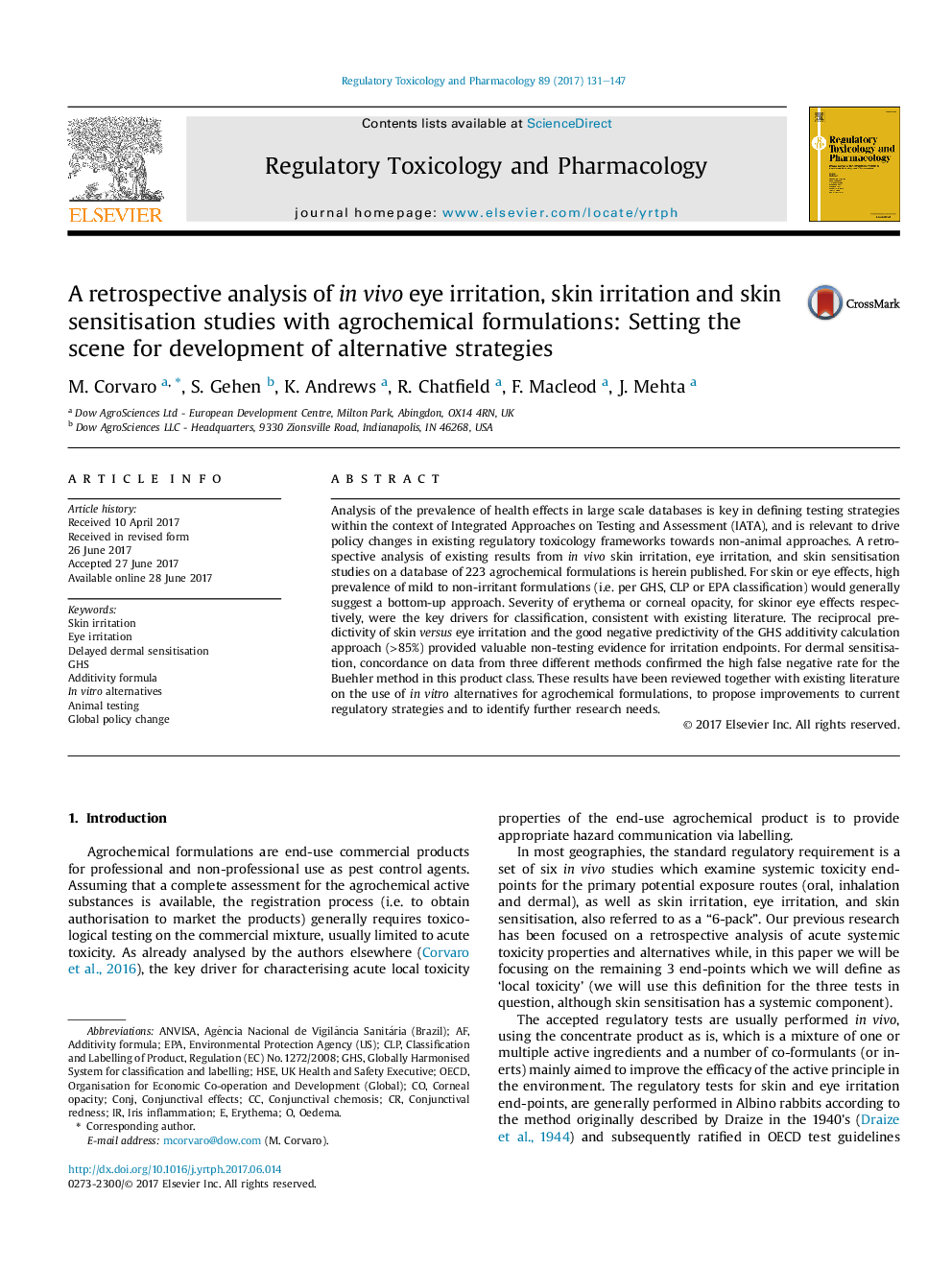| کد مقاله | کد نشریه | سال انتشار | مقاله انگلیسی | نسخه تمام متن |
|---|---|---|---|---|
| 5561193 | 1562114 | 2017 | 17 صفحه PDF | دانلود رایگان |
- Retrospective analysis of local toxicity data from 223 agrochemical formulations.
- Low prevalence of skin and eye irritants, suggesting bottom-up approaches.
- GHS additivity showed good negative predictivity for skin and eye irritation.
- The reciprocal negative predictivity of skin versus eye irritation confirmed.
Analysis of the prevalence of health effects in large scale databases is key in defining testing strategies within the context of Integrated Approaches on Testing and Assessment (IATA), and is relevant to drive policy changes in existing regulatory toxicology frameworks towards non-animal approaches. A retrospective analysis of existing results from in vivo skin irritation, eye irritation, and skin sensitisation studies on a database of 223 agrochemical formulations is herein published. For skin or eye effects, high prevalence of mild to non-irritant formulations (i.e. per GHS, CLP or EPA classification) would generally suggest a bottom-up approach. Severity of erythema or corneal opacity, for skinor eye effects respectively, were the key drivers for classification, consistent with existing literature. The reciprocal predictivity of skin versus eye irritation and the good negative predictivity of the GHS additivity calculation approach (>85%) provided valuable non-testing evidence for irritation endpoints. For dermal sensitisation, concordance on data from three different methods confirmed the high false negative rate for the Buehler method in this product class. These results have been reviewed together with existing literature on the use of in vitro alternatives for agrochemical formulations, to propose improvements to current regulatory strategies and to identify further research needs.
Journal: Regulatory Toxicology and Pharmacology - Volume 89, October 2017, Pages 131-147
